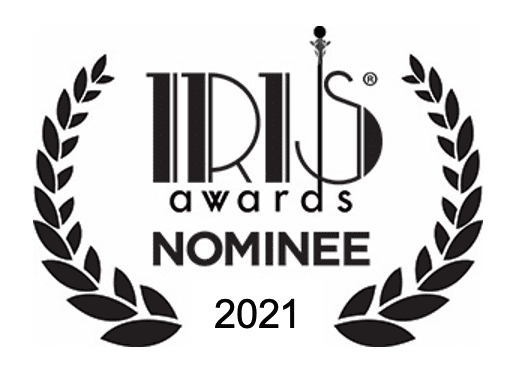— January 11, 2020 —
When the calendar flipped to Jan. 2, director/writer Erica Milsom took to Twitter to announce she would share one fun fact each day—for a total of nine—leading up to the Jan. 10 release date of “Loop,” the new Disney/Pixar
SparkShorts film she directed with producers Krissy Cababa and Michael Warch.
The seven-minute film, which debuted Friday on Disney+, unfolds from a premise that is unsuspectingly compelling: “A non-verbal, autistic girl [Renee] and a chatty boy [Marcus] are partnered on a canoeing trip. To complete their journey across an urban lake, they must both learn how the other experiences the world.”
The film breaks new ground by featuring Pixar’s first non-verbal autistic character.
As a black father raising a daughter who is on the autism spectrum, I shared my thoughts last month on the significance of both “Loop” and “Float,” which is based on the real-life experiences of creator Bobby Alcid Rubio who is raising an autistic son. I praised Milsom and her team for broadening the visual representation of who is affected by autism by depicting Renee as a person of color. I concluded by saying, “I can’t wait to see if “Loop” delivers on the promise of its script.”
I’m happy to report the film indeed delivers.
By training our eyes to imagine what the world might look like from someone else’s perspective, “Loop” encourages us to practice empathy in what feels like an increasingly divisive and judgmental world.
Since Milson gave us nine fun facts before the film’s release, here are my nine reasons to watch “Loop” now that’s it available for streaming:
#1. Its realistic portrayal of a nonverbal autistic person.
Dr. Stephen Shore famously said, “If you’ve met one person with autism, you’ve met one person with autism.” Truer words have never been spoken. Autism spectrum disorder (ASD) is just that, a spectrum of behavior that manifests differently in each person affected by the condition. “Loop” presents an authentic depiction of what ASD feels like for Renee thanks to its close consultation with groups like the Autistic Self Advocacy Network, whose motto is “nothing about us without us.”
#2. Its demonstration of empathy.
“Loop” puts the viewer in the shoes of Renee and Marcus by switching from Renee’s point of view one moment to Marcus’s the next. By training our eyes to imagine what the world might look like from someone else’s perspective, “Loop” encourages us to practice empathy in what feels like an increasingly divisive and judgmental world.
#3. Its emotional honesty.
Trying to connect with someone who is different from you can be awkward. “Loop” doesn’t shy away from that fact. Before Marcus steps into the canoe, he looks at Renee and says to the camp counselor, “Ugh. Why is she sitting like that?” The counselor replies, “So she can talk to you.” Marcus replies, “But I thought she couldn’t…” He’s utterly confused.
#4. Its memorable ringtone.
I found Renee’s ringtone—a pulsating rhythm followed by three dog barks—simply adorable. My daughter, a huge fan of “Puppy Dog Pals,” became fascinated by it as well and tried to imitate it, especially the barking part.
#5. The design of its film title.
Created by Pixar designer Laura Meyer, the curvy, rainbow spectrum title for “Loop” is a nod to the symbol for neurodiversity and appears in the film to mark a poignant turning point.
#6. Its setting in nature.
Being outdoors gets us out of our element and connected to the elements and, as seen in “Loop,” to each other. Milsom revealed that the setting for the film was inspired by Berkeley’s Aquatic Park.
#7. Its reminder that not all communication requires words.
Before my daughter was able to express herself with words, I was fixated on verbal communication. But so much of communication is nonverbal. We use our face, eyes, hands, arms, tone, pitch, and volume of our utterances to help convey meaning. We don’t always need or use words.
#8. Its depiction of stimming.
You stim. I stim. We all stim. According to Healthline, “stimming” refers to self-stimulating behaviors, usually involving repetitive movements or sounds, such as biting your nails or twirling your hair around your fingers when you’re bored, anxious, or need to relieve tension. In people with autism, “stimming might take the form of hand-flapping, spinning in circles, body rocking, or vocalizations such as grunting and muttering,” says Steven Kapp, a lecturer in psychology at the University of Portsmouth in the United Kingdom.
In “Loop,” Renee is shown stimming when she repetitively listens to her pulsating-bark ringtone; Marcus, while fidgeting with blades of grass as he waits for Renee to recover from a meltdown. “Loop” reminds us that despite our neurological differences, we share universal aspects of being human. Renee and Marcus share a passion for canoeing, a desire to explore nature and, yes, stimming.
#9. Marcus’ text message to Renee.
I won’t reveal it here. You’ll have to watch the film through the credits to see the endearing message. But let’s just say it involves a bowl of rice and an emoji of three barking dogs.
It’s heartening for me to see that people who are #ActuallyAutistic are embracing the film as exemplified by tweets like these:
In the end, “Loop” embodies a truism once said by Oprah, “Everybody just wants to be heard. Validate them. ‘I see you. I hear you. And what you say matters to me.'”
Father on,


1055 words



Leave a Reply